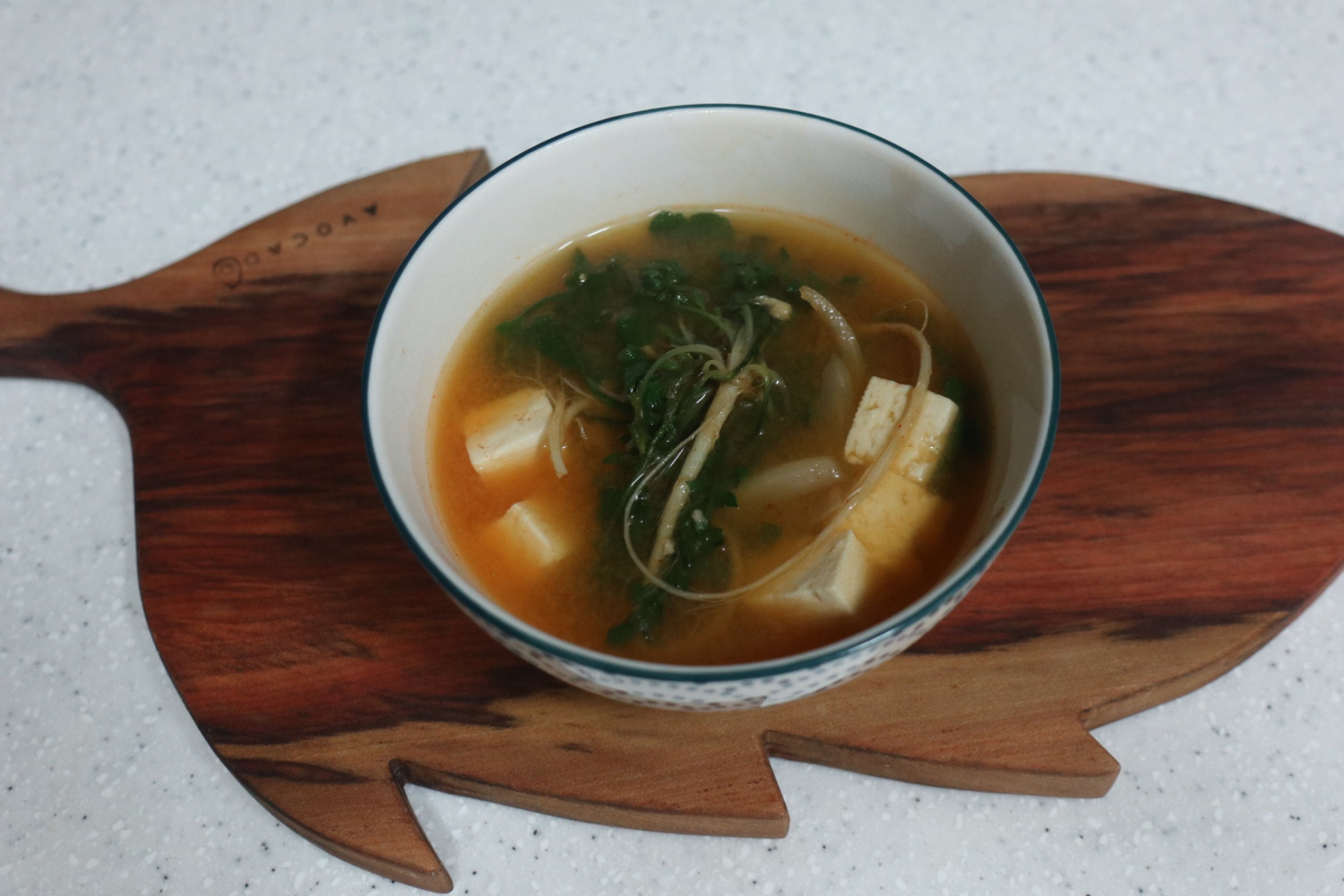Aromatic Spring Vegetable Soybean Paste Stew (Naengi Doenjang Guk)
How to Make Naengi Doenjang Guk Without Bitterness

Winter naengi (shepherd’s purse) is excellent for the body, particularly for strengthening liver function and is rich in vitamins. It makes for a perfect hangover soup after holiday gatherings. This recipe focuses on bringing out the fresh, spring-like flavor while minimizing any bitterness, making it a delightful dish for anyone to enjoy.
Main Ingredients- 1 bunch fresh Naengi (shepherd’s purse) (approx. 150-200g)
- 1/4 medium onion
- 1 block soft tofu or regular firm tofu (small size)
Seasoning & Broth- 1.5 Tbsp Doenjang (soybean paste) (adjust to taste)
- 0.5 Tbsp Gochujang (red pepper paste) (optional, for depth)
- 1 Tbsp minced garlic
- 1 Tbsp fish sauce (or Korean soup soy sauce, or anchovy sauce)
- 5-6 cups rice water (or anchovy-kelp broth)
- 1.5 Tbsp Doenjang (soybean paste) (adjust to taste)
- 0.5 Tbsp Gochujang (red pepper paste) (optional, for depth)
- 1 Tbsp minced garlic
- 1 Tbsp fish sauce (or Korean soup soy sauce, or anchovy sauce)
- 5-6 cups rice water (or anchovy-kelp broth)
Cooking Instructions
Step 1
Begin by preparing the fresh naengi. Carefully remove any soil from the roots by brushing it off or gently scraping it with a knife. Thoroughly cleaning the roots ensures a cleaner, more delicious soup.

Step 2
Rinse the prepared naengi thoroughly under running water, shaking it to remove any remaining soil or debris. Aim for a clean wash, as if you just picked it from the earth.

Step 3
To mellow out the characteristic slightly bitter taste of naengi, place the washed greens in a bowl and soak them in 1 cup of water mixed with 1 tablespoon of vinegar for about 20 minutes. This step helps reduce bitterness while enhancing its aromatic qualities.

Step 4
Now, it’s time to blanch the naengi. Fill a pot with plenty of water and bring it to a rolling boil over high heat.

Step 5
Once the water is boiling vigorously, add the naengi (drained from the vinegar water) and blanch for just 1-2 minutes. Be careful not to overcook, as this can cause the naengi’s delicate flavor and aroma to dissipate.

Step 6
This quick blanching process helps remove any impurities and sterilizes the greens, while crucially preserving their fresh, earthy flavor and aroma. It’s the secret to a perfectly balanced soup.

Step 7
Remove the blanched naengi from the hot water, briefly rinse it under cold water, and squeeze out any excess moisture. Then, cut it into bite-sized pieces, about 2-3 cm long.

Step 8
Cut the tofu into approximately 1.5 cm cubes, or into bite-sized pieces that are easy to eat. Using soft tofu will result in a soup that is even more comforting and gentle on the stomach.

Step 9
Thinly slice the onion. This will add a natural sweetness to the broth and contribute a pleasant texture.

Step 10
Prepare the rice water, which adds a wonderful depth and creaminess to the broth. Ladle about one cup of the cloudy water from when you wash rice into a separate container. (If you don’t have rice water, anchovy-kelp broth or plain water can be used.)

Step 11
Now, let’s build the soup’s base flavor. Pour the rice water (or broth) into a pot and dissolve 1.5 tablespoons of doenjang (soybean paste). It’s a good idea to taste as you go, as doenjang can vary in saltiness.

Step 12
To add a layer of savory complexity and a hint of spiciness, add 0.5 tablespoon of gochujang. This enhances the overall flavor profile, making the soup richer.

Step 13
Add 1 tablespoon of minced garlic and stir to combine the soybean paste and red pepper paste. Bring the mixture to a boil over high heat and let it simmer until the flavors meld together nicely.

Step 14
Once the broth is well-infused with the seasonings, pour in the reserved cup of rice water. Add the cubed tofu and sliced onion, then reduce the heat to medium and simmer until the tofu and onions are tender.

Step 15
When the tofu and onions are cooked through, add the prepared blanched naengi to the pot. It’s crucial not to overcook the naengi at this stage.

Step 16
Finally, add 1 tablespoon of fish sauce to season the soup. Fish sauce adds an extra umami boost that elevates the overall taste. (Korean soup soy sauce or anchovy sauce can also be used.)

Step 17
Let the soup simmer for just a brief moment after adding the naengi, then immediately turn off the heat. Overcooking will make the naengi tough and diminish its fresh, aromatic quality. The key is to cook it just enough to enjoy its vibrant flavor and tender texture. Your delicious Naengi Doenjang Guk is ready to be served!



